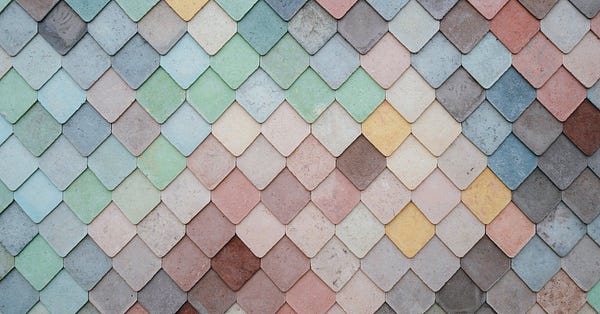✍️Science Writing News Roundup #37 (March 30, 2021)
How to debunk misinformation about COVID, vaccines and masks + How to find and vet journal articles + Writing science-themed books for young people
Good Thinking: Why Flawed Logic Puts Us All at Risk and How Critical Thinking Can Save the World. We live in an era where access to all the knowledge in the world is at our fingertips, yet that also means misinformation and falsehoods can spread further and faster than ever before. In Good Thinking, David Robert Grimes shows how we can be lured into making critical mistakes or drawing false conclusions, and how to avoid such errors.
🌄 Tips
Productive writing through a pandemic year. Renowned writing coach Roy Peter Clark shares what helped him stay productive during the pandemic year.
So you want to be a science communicator: Advice from a professional science writer. “Science communication is like origami — the idea is a piece of paper, but you can express the message in a multitude of ways, simply by folding it into different shapes,” writes Tara Fernandez.
How to debunk misinformation about COVID, vaccines and masks: We each have more power to be a science communicator than we realize. “Equipped with a few tools, we can each become part of a larger misinformation-fighting system—as I like to call it, a science defense system,” writes Kathleen Hall Jamieson.
Treasure hunt: How to find and vet journal articles. Sometimes, it can be tricky to determine the credibility of an academic journal. But certain metrics and good old-fashioned reporting can help point a journalist toward reputable research—and great stories. (This story has also been translated into Spanish)
💎 Opportunities
Join the WFSJ Professional Development Committee: The World Federation of Science Journalists is interested in setting up a mentorship program to share best practices among universities and colleges teaching science journalism.
Apply now for the Australian Museum Eureka Prize for Science Journalism: The prize is open to individuals and teams of up to six people where the work is the result of a collaborative team effort.
The Wilson Center and Earth Journalism Network are offering reporting grants to support the production of stories exploring how international diplomacy is shaping environmental policy in Latin America as well as the health and well-being of certain communities.
I, write is a science journalism contest organized by Imperial College’s I, Science magazine. Suitable for all students in Years 10-13, they want to challenge students to think outside the box, and consider where science can be found outside of the classroom.
The Department of Life Sciences Communication at UW–Madison is offering science communication summer courses. Courses include: Science and Storytelling; Science, Media and Society; Visualizing Science and Technology; Social Media for the Life Sciences, and Scientific Writing.





🔬 News
Making the science of Covid clearer: As a science reporter for The New York Times, Apoorva Mandavilli knows the world of research, labs and technical papers. In an interview, she talks about when she realized she didn’t want to be a research scientist, what it’s like to send her own kids back to school and her favorite lowbrow television.
Plants and poems; The story of Professor Anne Osbourn’s Mock Orange. Anne Osbourn, who recently had a book of poetry published, has always been passionate about popular science writing and the links between science, writing, poetry and art.
📺 Videos
Reporter Nights at SPS: Science Journalism in the Time of COVID-19. Claudia Dreifus and students in her class interviewed a panel of top science editors and reporters on their career paths, as well as the highlights and challenges of their day-to-day work.
The toughest audience: Writing science-themed books for young people. A conversation with Melissa Stewart, Loree Griffin Burns and Lita Judge.
Netflix’s ‘Connected’ Q&A with Host Latif Nasser and Showrunner David Mettler (DC Science Writers Association)
COVID-19 vaccines and variants: A virtual conversation with Dr. John Moore (Science Writers in New York)
📨 Resources
COVID-19: Learning from the past, defining our future. SciLine's media briefing featured two expert panelists providing science-informed perspectives on what COVID’s second year may bring.
Revising the “Hype Pipeline” Model in Scientific Communication. In this article, researchers present a new model for hype formation in science communication and in the public understanding of science.
Science writing in the age of COVID-19: “One of my favorite websites for COVID expert info is Dear Pandemic. The self-described ‘Nerdy Girls’ – female scientists – explain the concepts and findings that most confuse the public,” writes Ricki Lewis.


🗓️ Events
Covering the COVID-19 vaccine: What journalists need to know (March 29 - April 25, 2021)
The George Polk Awards Webinar: The Press & the Pandemic, Filling the Information Void (April 8, 2021)
Science Sources: Where to Find them and How to Vet Them (April 15, 2021)
Science Sonnets: The Poetry of Good SciComm (April 15, 2021)




🖼️ Jobs and internships
Senior Health and Science Reporter, WBUR, Boston University, MA
Editor-in-Chief, Nature Communications, London, New York, Berlin or Shanghai
Impact and Engagement Editor, Nature, London, New York or Washington
Editorial Assistant, WorldWise, Remote, Part-Time
Head of Content (Life Sciences B2B), Synthace, London, UK
Senior Editor, San Diego Zoo Wildlife Alliance, San Diego, CA
Science Writer Internship, Royal Society of Chemistry, Cambridge, UK
Deputy Editor, Science, Health & Climate, Vox Media, Washington, DC or New York City
Science Communications Internship, Research!America
Assistant/Associate Editor, Science News for Students, US-based
More jobs 👉Science Writing News Roundup #36
👉 Don’t miss any updates from the Science Writing News Roundup:
Worried you missed something? See previous newsletters here. What would you like to see in the newsletter? Please send me your suggestions by replying to this email: sciencewriting@substack.com😃
If you liked this post, share it with your friends 💙





